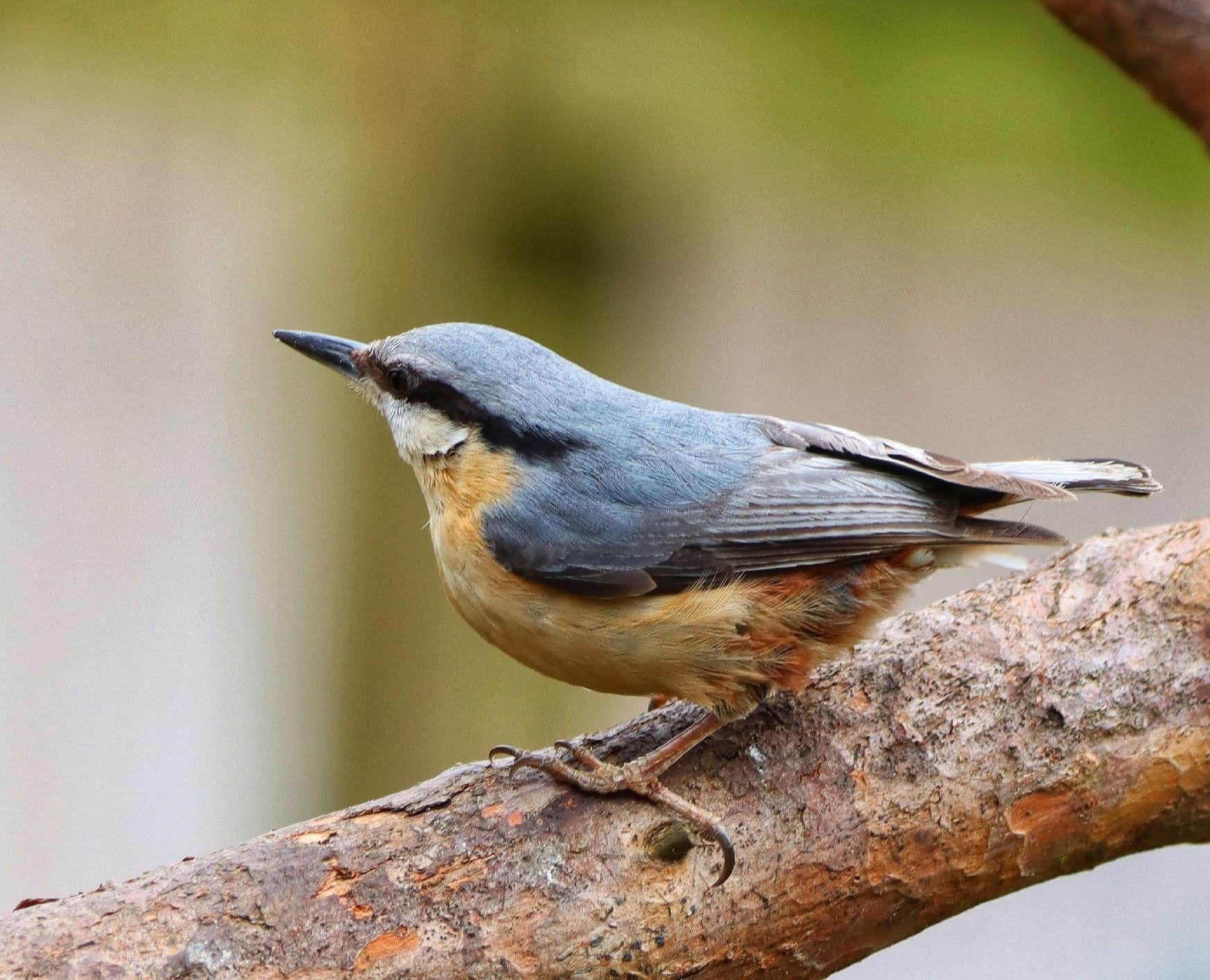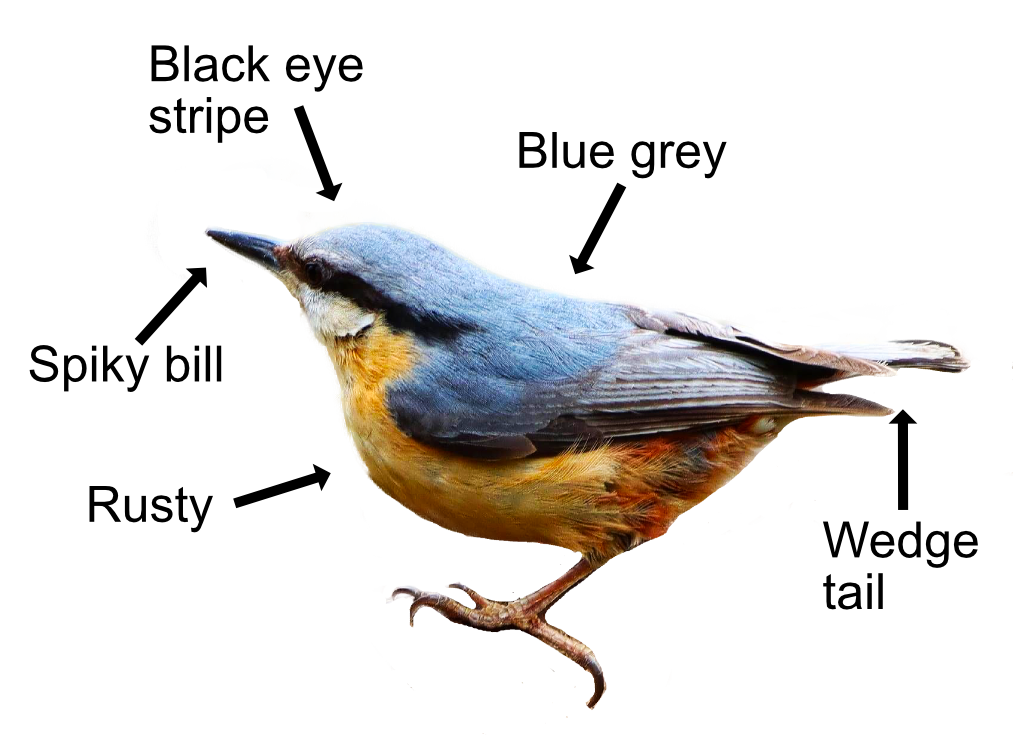
The Nuthatch is an agile woodland bird that loves being upside-down while climbing up and down trees or walls, just to show off. They are not so keen on pine trees because they prickle and are sticky, preferring to live in woods and parks with mature deciduous trees instead.
They look like a mini woodpecker and are pale blue grey above, buff below, with rusty sides and a bold black eye stripe. They have a long, black, spiky bill and a wedge shaped tail. There call is a loud "quip!", most often heard repeated in twos.

Nuthatches feed mainly on insects, beetles and spiders, switching to nuts in winter when there are fewer insects. They get their name from their habit of wedging a nut, seed or large insect in a crevice on a tree and hammering it open with their powerful bill. They will hide seeds by pushing them into the bark so they can come back to eat them later.
The Nuthatch nests in tree holes, adjusting the opening with mud until it is a perfect fit. This also stops other bigger birds from getting in. The nest hole is filled with bark and leaves and the 6-8 eggs are laid sometime during April. Mum alone sits on the eggs until they hatch 15 days later. The young are fed by both parents for the next 24 days until they are ready to leave.
Nuthatches are sedentary residents with 220,000 pairs found all over England and Southern Scotland. They will seldom move from the woods where they are born making their spread to new areas very slow. The average lifespan is between 2 and 3.5 years, with the oldest ringed bird living to 11 and becoming a master at cracking a nut.
Their Latin name is 'sitta europaea' where 'sitta' is derived from the Ancient Greek 'sitte' for nuthatch. The 'europaea' means 'European' as, despite their slow colonisation, they can be found all over Europe.